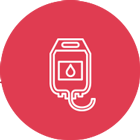We won’t lie about it. Veterinary expenses can be expensive, but it’s for good reason. Just as in human medicine, a huge team is involved with caring for your pet and we have to employ all of them. We strive to have the technology to care for pets in a wide array of situations. This technology is costly both to purchase and maintain. Our prices aren’t based on us making fortune (everyone in veterinary medicine could tell you this.) They’re based on providing fair wages to our employees and being able to stay in business to keep caring for your furry friends.
All of that said, it doesn’t change the fact that sudden veterinary medical expenses can be stressful. So, our question now is not “Why isn’t veterinary care cheaper”, but “What can I do to better afford veterinary care”. Here are 5 concrete things you can do to prepare for expenses and pay for them once they hit.

1. Examine Current Expenses
This one seems like it goes without saying, but anyone who works in veterinary medicine can tell you that it doesn’t seem to be common knowledge. Getting a pet is a serious decision. Cats and dogs have long lives. They’re not a hobby to invest in because we’re interested for the moment and for most pet parents the question is not if your pet will need emergency services at some point, but when.
According to one study, the cost of the first year of ownership for a dog or cat are both a little over $1,000. The following years are typically a bit cheaper, but you never know when an emergency may happen, so expecting to pay about $1,000 a year is wise. If you couldn’t afford that vacation last year that cost about the same amount, think twice before getting a pup or kitten.
2. Pet Insurance
No one expects emergencies to happen in any area of life, but we’re prepared (at least somewhat) for car wrecks, health issues, fires, and more with various kinds of insurance. Why not prepare for emergencies with your pet, which can be just as expensive as human medical emergencies, by purchasing pet insurance?
Not all pet insurance is created equal, in price and in coverage, so we won’t go into specifics about those items. Spend some time getting quotes and looking in to multiple companies. An important thing to note with pet insurance is that most (if not all) plans require you to pay for all expenses up front and then submit a claim. After the claim, the insurer will send you reimbursement check for a portion of your bill.
Another thing to note with pet insurance is that typically plans don’t cover wellness care. They’re primarily used for emergencies.
For more info on pet insurance, check out our previous guest blog article on the topic, from the folks at Pet First Pet Insurance.
3. Care Credit
You may already be familiar with Care Credit. There’s a good chance you’ve used it for human medical care. Many animal hospitals, including both locations of Jefferson Animal Hospital accept Care Credit.
Care Credit is a medical credit card that can only be used on medical bills. It works kind of like a store specific credit card. Care Credit helps you cover expenses upfront and pay it off overtime.
It’s not uncommon for pet insurance users to use Care Credit, get reimbursed for their expenses and then pay off the Care Credit bill when they receive their reimbursement check.
4. Scratch Pay
“Scratchpay provides pet parents with simple transparent payment plans.” Many animal hospitals can’t take the risk of setting up in-house payment plans for their clients and also may just not have the infrastructure to do so. Scratchpay offers us a way for clients another way to cover up costs up front and pay it off over time.

5. Savings Account
Some credit unions and banks actually offer pet specific savings accounts. This will differ from bank to bank so start by asking where you already bank. Though these pet specific savings accounts exist, it goes without saying that any savings account could work.
A savings account for pet expenses is a great idea even if you utilize all the previously mentioned options. Setting aside around $1,000 a year for regular expenses is a great start, but if your pup or cat has an emergency, that $1,000 will go fast.

Bottom Line
If you have thought about it and find yourself in a place where you can commit about $1,000 annually for pet care, then this list should shed some light on things.
At Jefferson Animal Hospital we strive to be compassionate, and want to help educate our clients. We hate seeing families deal with pet emergencies and we want to help educate our clients so that they can be more prepared if/when an emergency happens.
Many of the people who walk through our door didn’t plan for their day to happen the way it has. If precautionary steps are taken, these emergencies don’t have to completely derail us.






